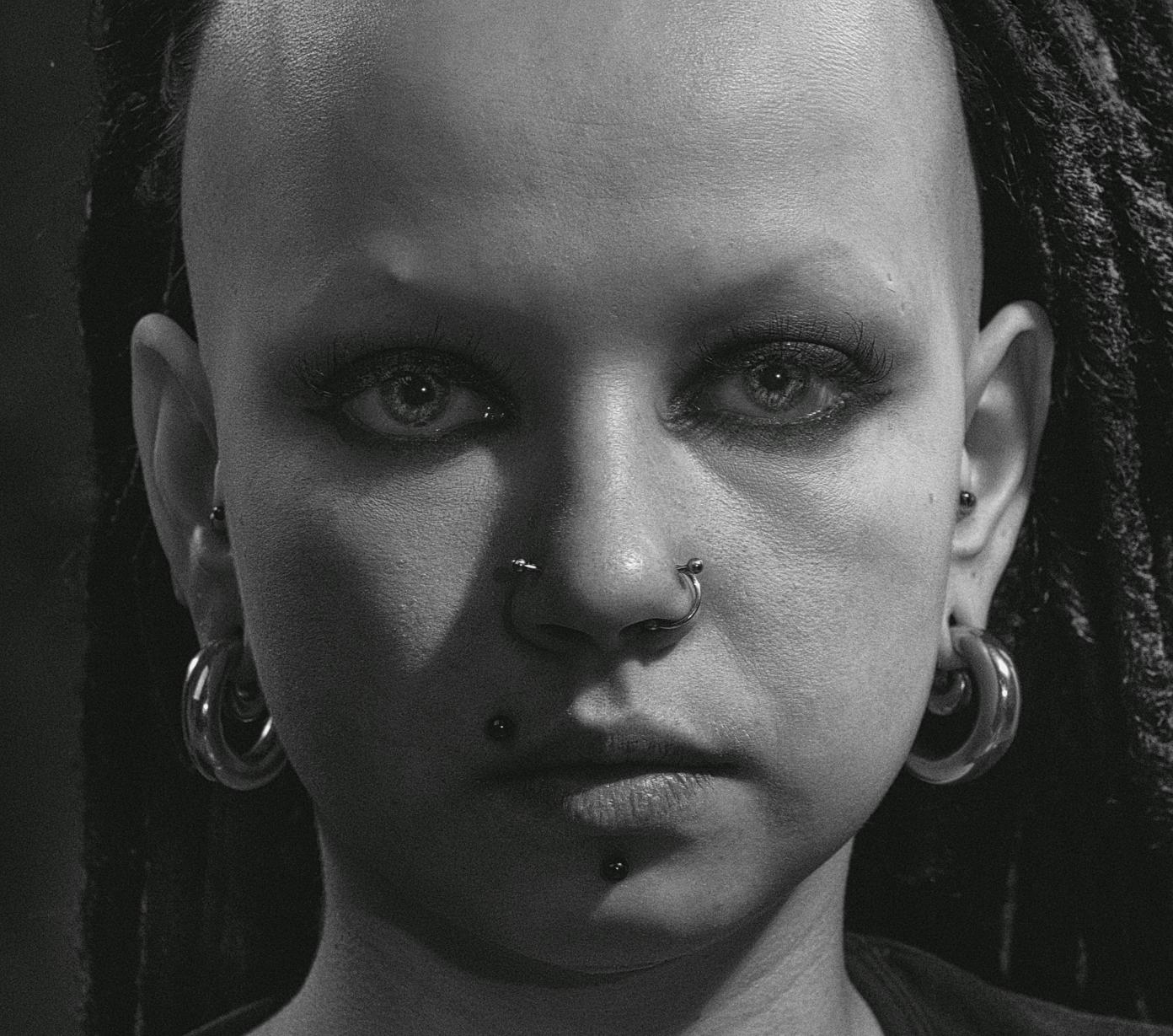Troubleshooting Tips: When Your Corkscrew Nose Stud Won’t Go In
Introduction
A corkscrew nose stud can be a stylish and chic addition to your look. However, there are times when it refuses to go in, causing frustration. Whether you’re new to piercings or have experienced this problem repeatedly, understanding the reasons and knowing how to handle the situation is crucial. This blog will cover common issues that could prevent your corkscrew nose stud from going in, a step-by-step insertion guide, and when to seek professional help. By taking preventive measures and learning from others’ experiences, you can save yourself from unnecessary discomfort and potential complications.

Common Reasons Why Your Corkscrew Nose Stud Won’t Go In
Initial Piercing Swelling
Initial swelling is a common issue many people experience after getting a nose piercing. The swelling can obstruct the way, making it difficult for the corkscrew nose stud to slide in easily. Even if the swelling isn’t visible, the tissue around the piercing may thicken, causing resistance.
Presence of Scar Tissue
Scar tissue can form at the piercing site, particularly if it has been reopened multiple times or infected. Scar tissue is tougher and less pliable than regular skin, making it a challenge to insert the stud without causing further irritation or pain.
Incorrect Stud Size
Another common issue is using a stud that doesn’t fit properly. If the gauge (thickness) of the corkscrew stud doesn’t match your piercing, it will likely not go in. Moreover, even if the gauge matches, variations in the stud’s length can cause issues.
Angle of Insertion
Corkscrew nose studs need to be inserted at a specific angle to align correctly with the piercing hole. Incorrect angles can create resistance and make it almost impossible to slide the stud in without injuring yourself.
Step-by-Step Guide to Properly Inserting a Corkscrew Nose Stud
Preparing the Stud and Your Nose
- Clean Your Hands: Wash your hands thoroughly with soap and water to minimize the risk of infection.
- Sanitize the Stud: Use a saline solution or an alcohol wipe to sanitize the stud.
- Clean the Piercing Area: Gently clean your nose and the piercing area using a saline solution to remove any build-up and bacteria.
Ensuring Proper Angle and Technique
- Locate the Hole: Use a mirror in a well-lit area to locate the piercing hole accurately.
- Hold the Stud Correctly: Hold the corkscrew stud by its straight end for better control.
- Insert at an Angle: Slowly insert the tip of the stud into the hole at the correct angle. This often means pushing it in at a slight diagonal rather than straight on.
Using Lubrication for Easier Insertion
- Apply Lubricant: Use a small amount of water-based lubricant on the stud. Petroleum-based products should be avoided as they can block the piercing and cause infection.
- Gently Twist: As you insert the corkscrew stud, gently twist it to follow its natural curve. This helps in sliding it in without much resistance.
Handling Pain and Discomfort
- Take Breaks: If you feel too much pain, take breaks in between attempts to let your piercing rest.
- Over-the-Counter Pain Relief: Over-the-counter pain relief can be taken beforehand to mitigate pain.
- Be Patient: Rushing the process will only cause more discomfort and potentially damage the piercing site.

When to Seek Professional Help
Persistent Issues
If your corkscrew nose stud simply won’t go in despite trying all the steps, it’s best to visit a professional piercer. They have the expertise to identify what’s wrong and can offer immediate solutions.
Signs of Infection
Redness, swelling, pus, or severe pain can be signs of an infection. If you suspect an infection, seek medical advice immediately rather than attempting to insert the stud yourself.
Professional Removal and Reinsertion
Sometimes, professional help is required for both removal and reinsertion of the nose stud, especially if there is significant scar tissue or the piercing hole appears partially closed.

Preventative Measures for Easy Reinsertion
Regular Cleaning and Maintenance
Regularly clean the piercing site and the stud. Use a saline solution to keep the area free from bacteria and build-up.
Using the Right Jewelry Material
Stick to hypoallergenic and high-quality materials such as surgical steel, titanium, or real gold. These materials are less likely to cause adverse reactions.
Keeping the Piercing Hole Viable
Keep a stud or a retainer in place if you have to go without your jewelry for a while. This will prevent the hole from closing or shrinking, making reinsertion easy.
Personal Experiences and Stories
Common Mistakes and How to Avoid Them
One common mistake people make is trying to force the stud in. This not only causes pain but also damages the tissue. Always be gentle and patient. Another mistake is not following the angle the stud is designed for, which often results in the stud getting stuck halfway.
Success Stories with Insertion Techniques
Many have found success by simply twisting the stud gently while pushing it in or applying a small amount of lubrication. Techniques like these often make the process smooth and almost painless.
Conclusion
Dealing with a corkscrew nose stud that won’t go in can be frustrating, but understanding why it happens and how to handle it can make a significant difference. Follow the guide and tips provided to ensure a smooth insertion process. Seek professional help if needed and take preventive measures to keep your piercing healthy.
Frequently Asked Questions
Why is my corkscrew nose stud not going in after months?
Months after the piercing, factors like the formation of scar tissue, incorrect angle, or shrinkage of the piercing hole can hinder the insertion of the stud. Ensure the site is cleaned, and the stud is correctly angled.
Can I use petroleum jelly to insert my nose stud easier?
It’s not recommended to use petroleum jelly as it can clog the piercing and increase the risk of infection. Opt for water-based lubricants for safer results.
How long does it take for a nose piercing to heal completely?
A nose piercing generally takes about 4 to 6 months to heal fully, though it can vary from person to person. Continuous care and keeping the piercing clean can help expedite the healing process.
